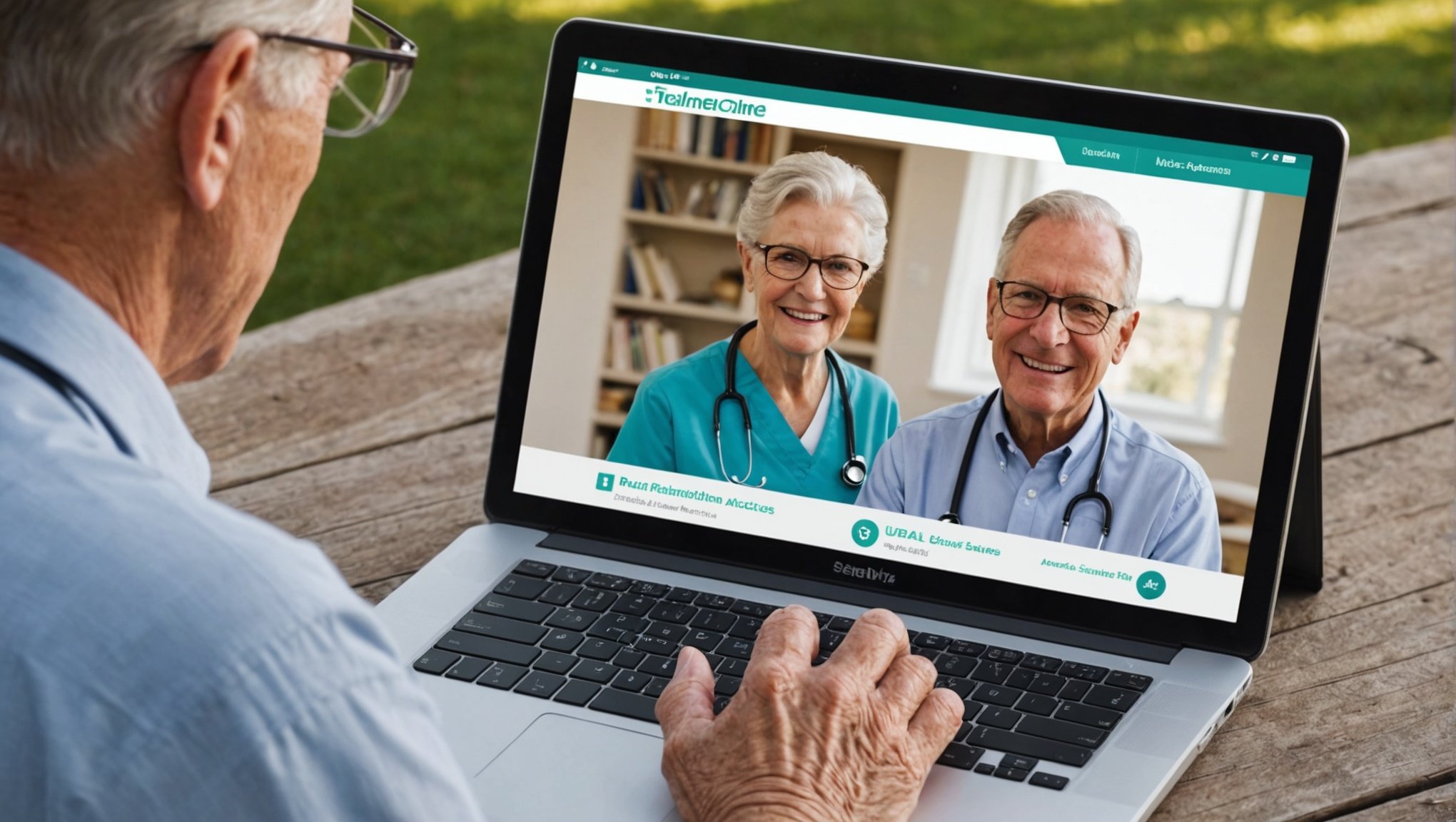Accessing healthcare can be particularly challenging for rural seniors. Telemedicine offers a solution, bridging the gap between distance and quality care. This guide explores how technology empowers seniors, providing resources and strategies to enhance healthcare efficiency. By embracing telemedicine, rural seniors can enjoy greater convenience and continuity in their health management, leading to improved outcomes. Join us as we unlock these valuable opportunities for better health.
Understanding Telemedicine for Rural Seniors
Telemedicine, a transformative approach to healthcare, involves the use of digital technology to deliver medical services and information remotely. This method is particularly significant for enhancing rural healthcare access, where geographical barriers often limit the availability of traditional medical services. By facilitating virtual consultations and remote patient monitoring, telemedicine bridges the gap between healthcare providers and patients in isolated areas.
Also to read : Find Lasting Love: Explore the Best Over 50 Dating Site
For rural seniors, telemedicine is a vital resource. Many face unique health challenges, including limited mobility and access to healthcare facilities. Telemedicine offers a solution by providing senior health resources directly to their homes. This not only improves access to necessary medical care but also reduces the need for travel, which can be burdensome for seniors.
The importance of telemedicine extends beyond convenience. It plays a crucial role in managing chronic conditions, which are prevalent among the elderly. Regular virtual check-ups and monitoring help in maintaining their health and preventing complications. Furthermore, telemedicine can offer personalized care plans tailored to the specific needs of rural seniors, ensuring they receive the best possible care despite their location.
Also to see : Exploring the Role of Art Therapy in Alleviating Depression in Seniors: A Path to Emotional Healing
Benefits of Telemedicine for Seniors
Telemedicine offers numerous benefits for seniors, significantly enhancing their healthcare experience. One of the primary advantages is the increased accessibility to healthcare services. Seniors in rural areas often face challenges due to limited access to medical facilities. Telemedicine bridges this gap by allowing them to consult with healthcare professionals without leaving their homes. This accessibility is crucial for those with mobility issues or chronic conditions requiring regular monitoring.
Another key benefit is the enhanced convenience telemedicine provides. Seniors no longer need to endure long journeys to visit healthcare providers. Virtual consultations save time and effort, reducing the physical and logistical burdens associated with travel. This convenience is particularly valuable for seniors who may find transportation difficult or exhausting.
Moreover, telemedicine has the potential to improve senior health outcomes through preventative care. Regular virtual check-ups enable early detection of health issues, allowing for timely interventions. This proactive approach can prevent complications and promote healthier lifestyles. Telemedicine also facilitates the creation of personalised care plans, tailored to each senior's unique needs, ensuring they receive appropriate and effective treatment. Overall, telemedicine is a transformative tool that empowers seniors by providing accessible, convenient, and comprehensive healthcare solutions.
Technology Requirements for Telemedicine
Understanding the technology requirements for telemedicine is crucial to ensure seamless healthcare delivery for seniors in rural areas. This involves setting up the necessary devices and ensuring reliable internet access.
Essential devices for telemedicine
To participate in telemedicine, seniors require basic devices such as smartphones, tablets, or computers. These devices must have a camera and microphone to facilitate virtual consultations. A user-friendly interface is recommended to accommodate seniors who may not be tech-savvy. It's important to ensure that these devices are properly set up with the necessary applications for telehealth services.
Internet connectivity considerations
Reliable internet access is fundamental for telemedicine. A stable connection ensures uninterrupted communication between seniors and healthcare providers. For rural areas, this might involve exploring different internet options, such as broadband or mobile data services, to find the most reliable solution. It's essential to verify that the internet speed is sufficient to support video conferencing without lag or interruptions.
Recommended applications and platforms
Several applications and platforms are available to facilitate telemedicine. It's advisable to use platforms that are secure, easy to navigate, and specifically designed for healthcare. Popular options include Zoom for Healthcare, Doxy.me, and Teladoc, which offer features tailored to medical consultations while ensuring patient privacy and data security.
Overcoming Barriers to Telemedicine Access
Navigating telemedicine barriers can be daunting for rural seniors, yet understanding these challenges is the first step towards effective solutions. Common obstacles include limited internet connectivity, lack of digital literacy, and resistance to adopting new technology. These rural health challenges often hinder access to essential healthcare services.
To address these issues, it's crucial to implement strategies that facilitate technology adoption among seniors. Providing user-friendly devices and interfaces can significantly ease the transition. Additionally, ensuring reliable internet access is paramount. Exploring various connectivity options, such as satellite or mobile broadband, can offer viable solutions for remote areas.
Training and support resources play a vital role in overcoming these barriers. Community workshops and online tutorials can empower seniors by enhancing their digital skills. Local healthcare providers can collaborate with technology experts to offer personalized guidance and assistance.
Moreover, establishing a support network is essential. Family members, caregivers, and community volunteers can provide necessary encouragement and assistance, fostering a supportive environment for seniors to embrace telemedicine. By addressing these barriers, rural seniors can gain improved access to healthcare, enhancing their overall well-being and quality of life.
Effective Communication with Healthcare Providers
Effective patient-provider communication is essential in telemedicine to ensure quality care and build strong healthcare relationships. Understanding telemedicine etiquette can enhance these interactions, making virtual visits more productive and satisfying.
Preparing for a Telemedicine Appointment
Preparation is key to a successful telemedicine appointment. Start by listing your symptoms, concerns, and any questions you have. Ensure your device is charged and your internet connection is stable. Familiarise yourself with the telemedicine platform you will use, and test your camera and microphone. This preparation helps you focus on the consultation and ensures all your concerns are addressed.
Tips for Clear Communication During Virtual Visits
Clear communication is crucial during virtual consultations. Speak clearly and at a moderate pace. Use simple language to describe your symptoms and concerns. Actively listen to your provider, and don't hesitate to ask for clarification if needed. Maintain eye contact by looking into the camera, which helps in establishing a connection with your healthcare provider.
Following Up and Managing Care After Appointments
After your appointment, follow your provider's instructions carefully. If you have further questions or concerns, don't hesitate to reach out through the telemedicine platform's messaging feature. Regular follow-ups are important for managing ongoing health conditions and ensuring continuity of care.











